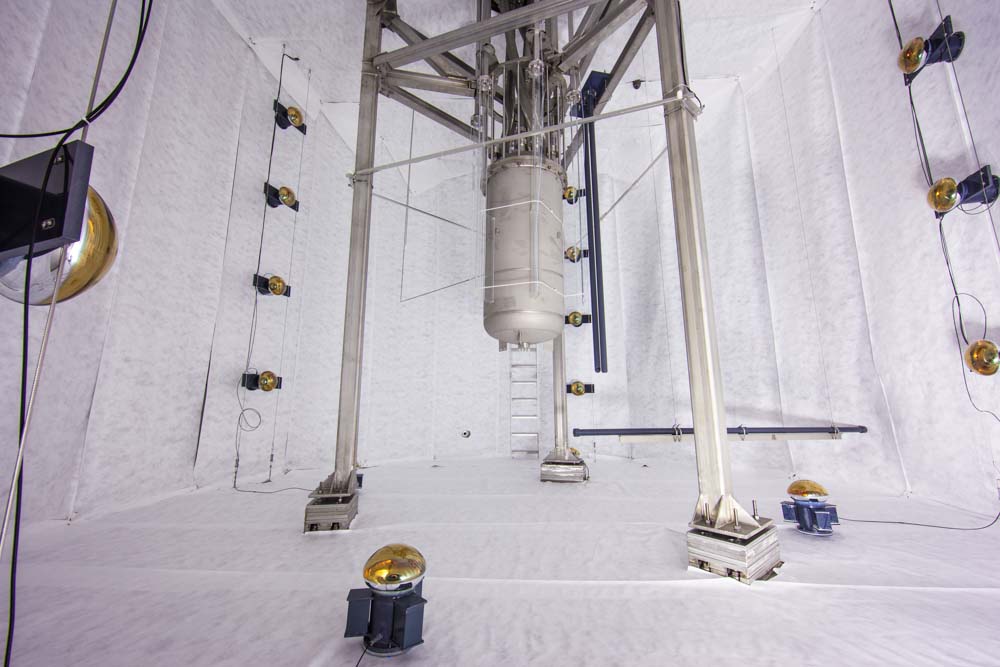History
It followed the first such effort which started in the west coast of the United States in the previous year. The UKDMC included UK astrophysicists and particle physicists from the Rutherford Appleton Laboratory, Imperial College London and Sheffield University.
Detectors were set up 1,100 m underground in a halite seam at the Boulby Mine in the North East of England. The mine operators, then Cleveland Potash Ltd., provided access to several disused tunnels and caverns in low background salt rock for the UK underground physics programme.
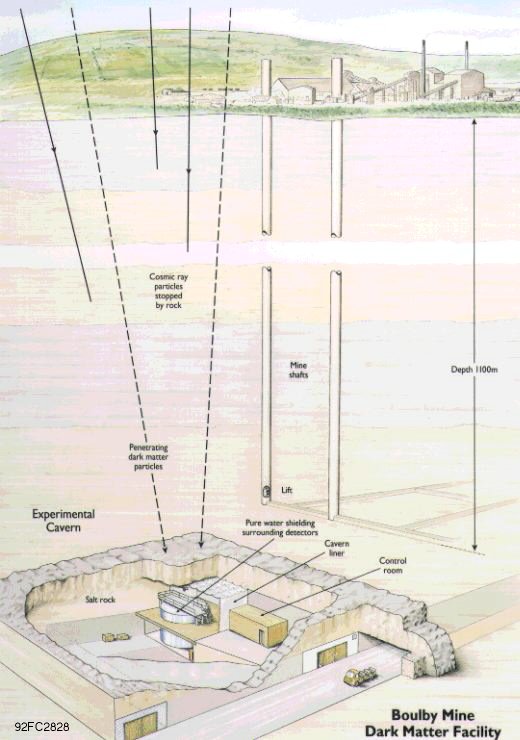
The early Boulby Underground Laboratory which hosted the first set of dark matter experiments in the 1990s.
The UKDMC deployed multiple dark matter experiments, developing WIMP search techniques using scintillator crystals, gaseous detectors, and liquid xenon detectors. First results were published in 1996 from room temperature NaI(Tl) crystals. NAIAD was an array of such crystals that operated in 2001-2003. The early experiments were built and operated in a challenging environment, until a new laboratory was built in 2003 to accommodate the expanding ZEPLIN and DRIFT programmes.
DRIFT is a gaseous Time Projection Chamber (TPC) designed to detect the directionality of dark matter interactions (a powerful way to reject most backgrounds). The ZEPLIN programme developed liquid xenon detectors, based on the excellent prospects for high sensitivity and scalability offered by a noble liquid target. The UKDMC continued until 2007, when the collaborating institutions separated to pursue the ZEPLIN-III and DRIFT-II projects independently.
METRES UNDERGROUND
YEAR FORMED
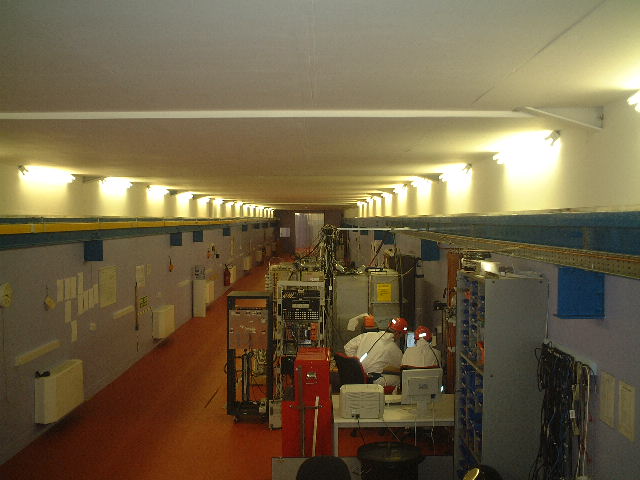
View of the Palmer Laboratory at Boulby where the ZEPLIN-II, ZEPLIN-III and DRIFT-II experiments operated.
The ZEPLIN programme at Boulby dates back to the late 1990s; it featured a sequence of experiments of increasing complexity aimed at applying this technique to dark matter detection.
ZEPLIN-I was a single-phase liquid xenon experiment which published final results in 2005; it featured at its core a PTFE-lined 5-kg chamber with three 8-cm diameter photomultipliers viewing the liquid xenon scintillation.
ZEPLIN-II and ZEPLIN-III were the first two-phase systems designed dark matter searches, and were essentially developed in parallel and exploiting different technological solutions. Groups from the University of California, Los Angeles, LIP-Coimbra in Portugal, and ITEP-Moscow joined the UK groups at various stages of the programme.
ZEPLIN-II became the first such system to search for dark matter in the world, completing in 2007; it utilized a deep, high-reflectance PTFE chamber containing 31 kg of liquid xenon with readout from seven 13-cm diameter PMTs in the gas phase.
ZEPLIN-III concluded the liquid xenon programme at Boulby, with science runs in 2008 and, following an upgrade phase, in 2010/11; its design featured 31 2-inch PMTs immersed in the liquid, viewing a thin disc geometry of 12 kg of liquid xenon under high electric field. ZEPLIN-III achieve the best particle discrimination achieved in liquid xenon, rejecting electron recoils to 1 part in 10,000. The detector was mostly constructed from ultra-pure copper.

The ZEPLIN-III experiment at the Whitby Museum.
After conclusion of ZEPLIN-III in 2012, the UK groups joined the LUX experiment then being deployed at SURF, as the LUX-ZEPLIN collaboration was being formed. The series of sodium iodide and xenon detectors at Boulby covered several orders of magnitude in WIMP scattering cross-section, producing some world-leading results along the way. The DRIFT programme was equally pioneering, seeding a significant worldwide effort in directional detection for dark matter.
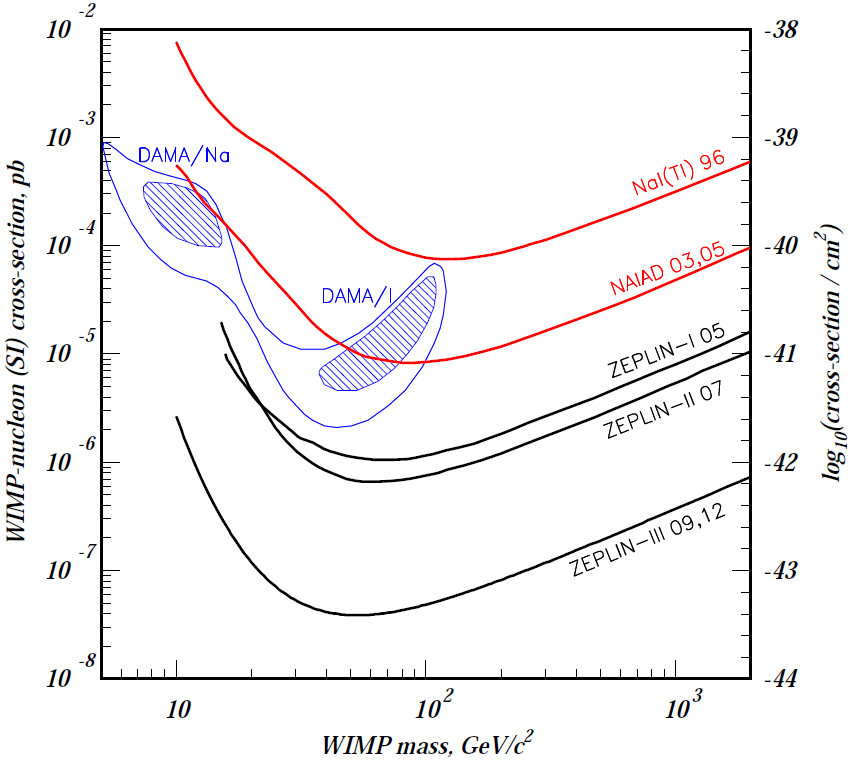
Progress in WIMP cross-section sensitivity from the UKDMC programme at Boulby.
The Large Underground Xenon experiment operated at the Sanford Underground Research Facility, in Lead, South Dakota, USA, between 2012 and 2016. LUX had a very successful science programme, ruling out WIMP claims from other collaborations.
LUX featured a larger detector, with 250 kg of active liquid xenon contained within a 50-cm long field-cage and viewed by two arrays of 61 PMTs. The detector was contained inside an ultra-low background titanium cryostat, which resided at the centre of a large water tank for additional shielding. In addition to a large number of high-impact dark matter results, the LUX collaboration developed novel calibrations techniques which have since become the standard in the field.

LUX detector at the Visitor Centre in Lead, SD, after decommissioning in 2016.
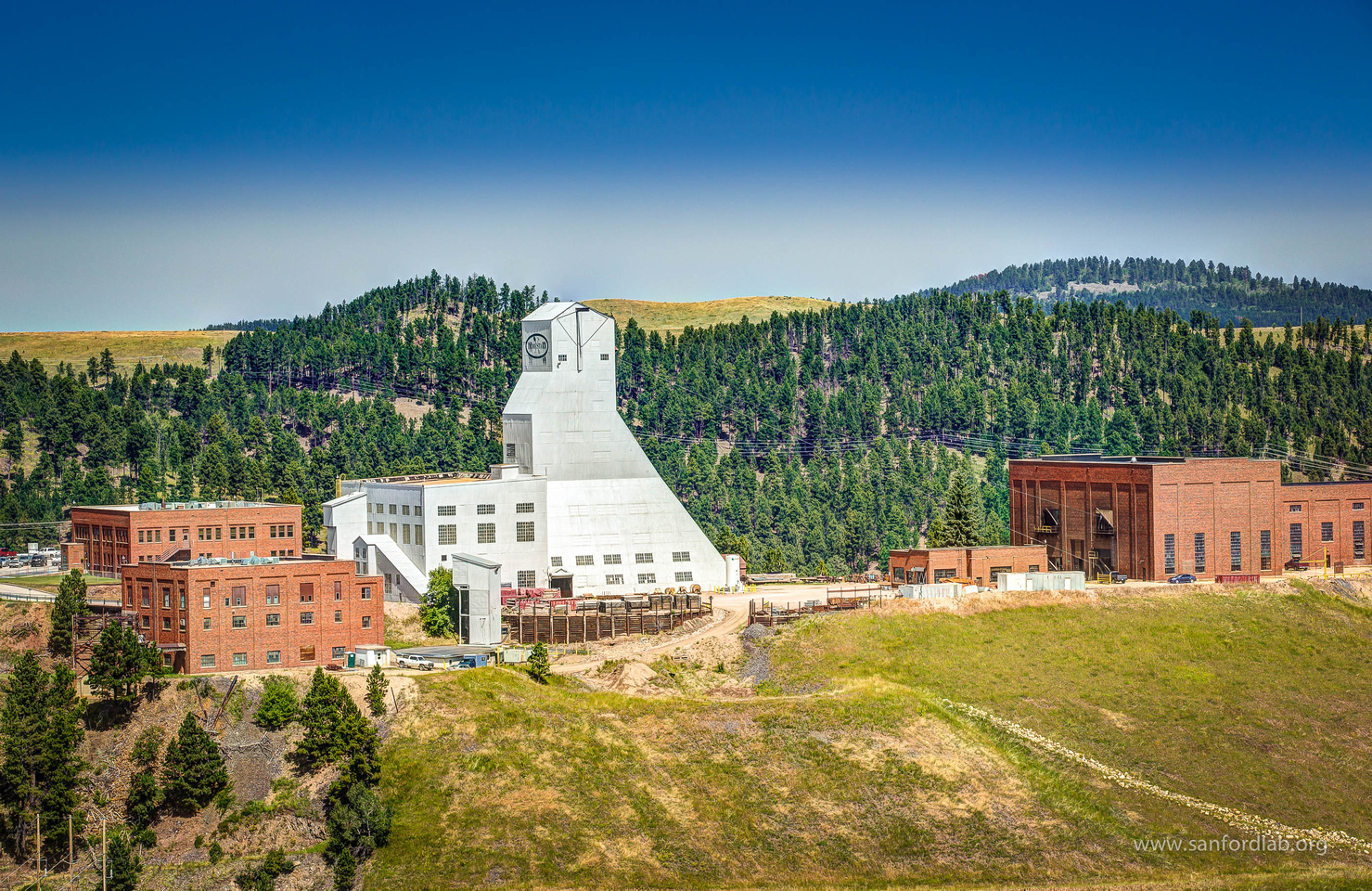
Surface facility and Yates shaft headframe, Lead, SD.
